1.Punjab Karela-15:
2.Punjab Kareli-1 (2009):
3.Punjab Jhaar Karela-1 (2017):
Older varieties
4.Punjab-14 (1985):
Other Varieties
5.Arka Harit :
6.Pusa Vishesh:
Other state varieties:
7.CO 1:
8.COBgoH 1:
The variety matures in 115-120 days and gives an average yield of 20-21 t/acre.
9.MDU 1:
COBgoH1
Soil –
Climate –
Fertilizer Requirement (kg/acre)
| UREA | SSP | MURIATE OF POTASH |
| 30 | 125 | 35 |
Nutrient Requirement (kg/acre)
| NITROGEN | PHOSPHORUS | POTASSIUM |
| 13 | 20 | 20 |
1.Downy mildew: Pseudoperonospora cubensis

Symptoms
Management
2.Powdery mildew: Erysiphe cichoracearum

Symptoms
Management
3.Mosaic: PRSV/CMV
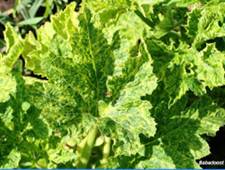

Symptoms:
Management
1.Fruit flies: Bactrocera cucurbitae
Symptoms of damage:
Management:
|
2.Pumpkin beetles : Aulacophora foveicollis
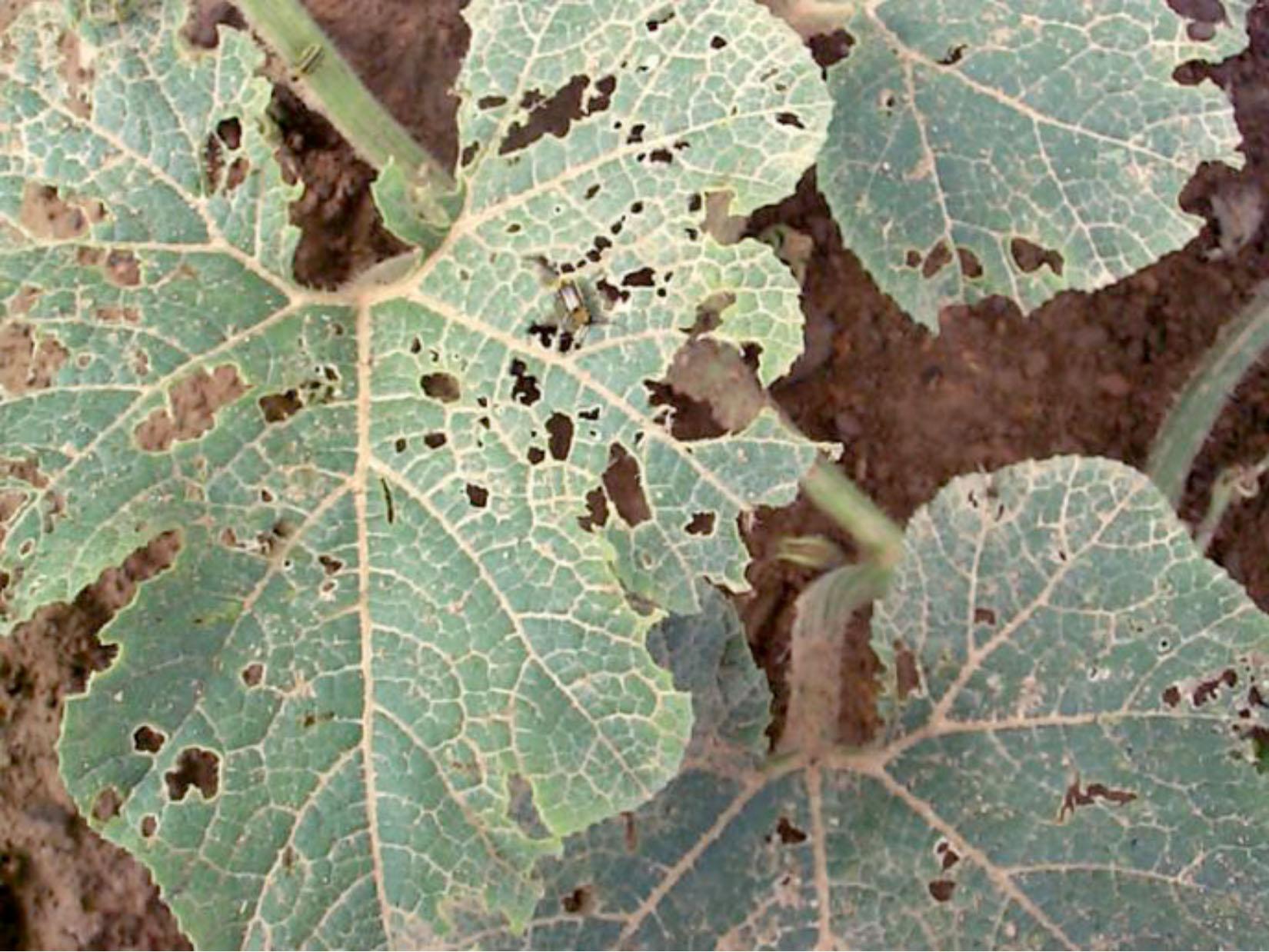

Symptoms of damage:
Management:
3.Stem borer or clear winged moth: Melittia eurytion
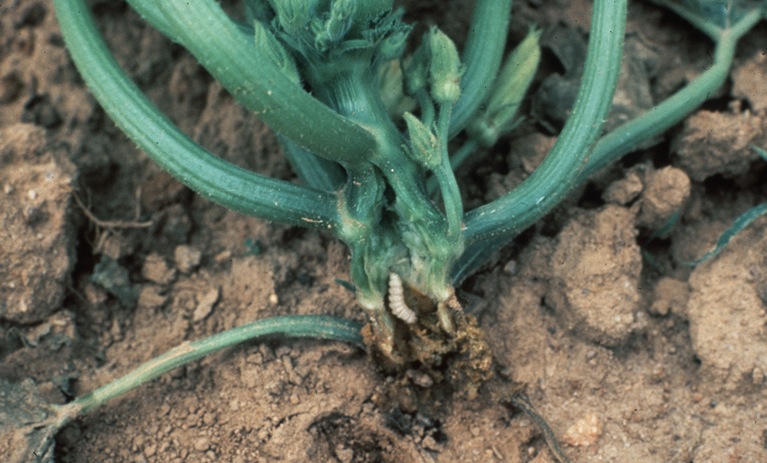
Symptoms of damage:
Management:
4.Stem gall fly: Neolasioptera falcata

Symptoms of damage :
Management:
5.Snake gourd semilooper : Plusia peponis
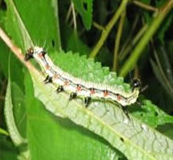
Symptoms of damage:
Management:
6.Pumpkin caterpillar: Diaphania indica
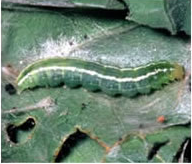
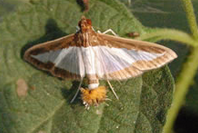
Symptoms of damage:
Management:
7.Bottle gourd plume moth : Sphenarches caffer

Symptoms of damage:
Management:
|
8 Leaf miner : Liriomyza trifolii
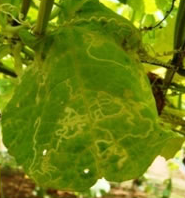
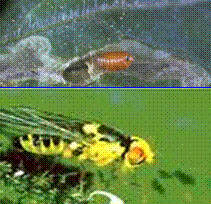
Symptoms of damage:
Management:
|
1.Nitrogen
|
| Deficiency Symptoms |
Stunted plant growth; Old leaves turn yellow in color |
| Correction Measure |
Foliar spray of urea @ 1% |
2.Potassium
|
| Deficiency Symptoms |
Interveinal necrosis of old leaves, puckering, distortion and outward rolling of middle leave. |
| Correction Measure |
Foliar spray of 0.2-0.5% K2SO4 |
3.Sulphur
|
| Deficiency Symptoms |
Stunted plant growth;Chlorosis occur in young leaves |
| Correction Measure |
Foliar spray of CaSO4 @ 0.5% |
4.Boron
|
| Deficiency Symptoms |
Young leaves become brownish and brittle; crinkling of leaves; small and malformed fruits |
| Correction Measure |
Foliar spray of sodium molybdate @ 0.5% |
5.Iron
|
| Deficiency Symptoms |
Chlorosis occur in young leaves; leaves turn into yellow |
| Correction Measure |
Foliar spray of FeSO4@0.5% |
6.Manganese
|
| Deficiency Symptoms |
Symptoms seen in young leaves; leaves become pale yellow |
| Correction Measure |
Foliar spray of MnSO4@0.5% |
7.Zinc
|
| Deficiency Symptoms |
Symptoms will be seen in young leaves; leaves become small |
| Correction Measure |
Foliar spray of ZnSO4 @ 0.5% |
Fertigation
Apply a dose of 200:100:100 kg NPK/ha throughout the cropping period through split application
Fertigation Schedule- Bitter gourd (Hybrid)
Recommended dose: 200:100:100 kg/ha
| Stage | Crop stage | Duration in days | Fertilizer grade | Total Fertilizer (kg/ha) | Nutrient applied | % of requirement | ||||
| N | P | K | N | P | K | |||||
| 1 | Crop establishment stage | 10 | 19:19:19 + MN 13-0-45 Urea | 26.81 11.00 29.03 | 5.00 1.43 13.35 | 5.00 – – | 5.00 4.95 – | 10.00 | 5.00 | 10.00 |
| Subtotal | 19.78 | 5.00 | 9.95 | |||||||
| 2 | Vegetative stage | 30 | 12-61-0 13-0-45 Urea | 12.28 66.00 109.00 | 1.47 8.58 50.14 | 7.49 – – | – 29.70 | 30.00 | 7.50 | 30.00 |
| Subtotal | 60.19 | 7.49 | 29.70 | |||||||
| 3 | Flower initiation to first picking | 30 | 12-61-0 13-0-45 Urea | 12.28 44.00 115.00 | 1.47 5.72 52.90 | 7.49 – – | – 19.80 – | 30.00 | 7.50 | 20.00 |
| Subtotal | 60.09 | 7.49 | 19.80 | |||||||
| 4 | Harvesting stage | 45 | 19:19:19 + MN 13-0-45 Urea | 26.31 78.00 97.52 | 5.00 10.14 44.86 | 5.00 – – | 5.00 35.10 – | 30.00 | 5.00 | 40.00 |
| Total duration | 115 days | Subtotal | 60.00 | 5.00 | 40.10 | |||||
| Total | 200.06 | 24.98 (or) 25.00 | 99.35 (or) 100.00 | 100 | 25 | 100 | ||||
*75% RD of Phosphorus applied as superphosphate = 469 Kg/ha.
1. 19:19:19 = 53 kg/ha
2. 13:0:45 = 199kg/ha
3. 12:61:0 = 25 kg/ha
4. Urea = 351 kg/ha
Varieties : 14 t/ha in 140 – 150 days.
Hybrids : 40 t/ha in 180 days
Crop Growing districts : Coimbatore, Dindigul, Cuddalore, Thoothukudi, Tiruppur
Major markets in Tamil Nadu Periyar Vegetable Market, Koyambedu, Chennai Gandhi Market, Oddanchathiram Natchipalayam vegetable market, Coimbatore
Grade Specification 20-25 cm long green fruits with short neck and tubercles are preferred
